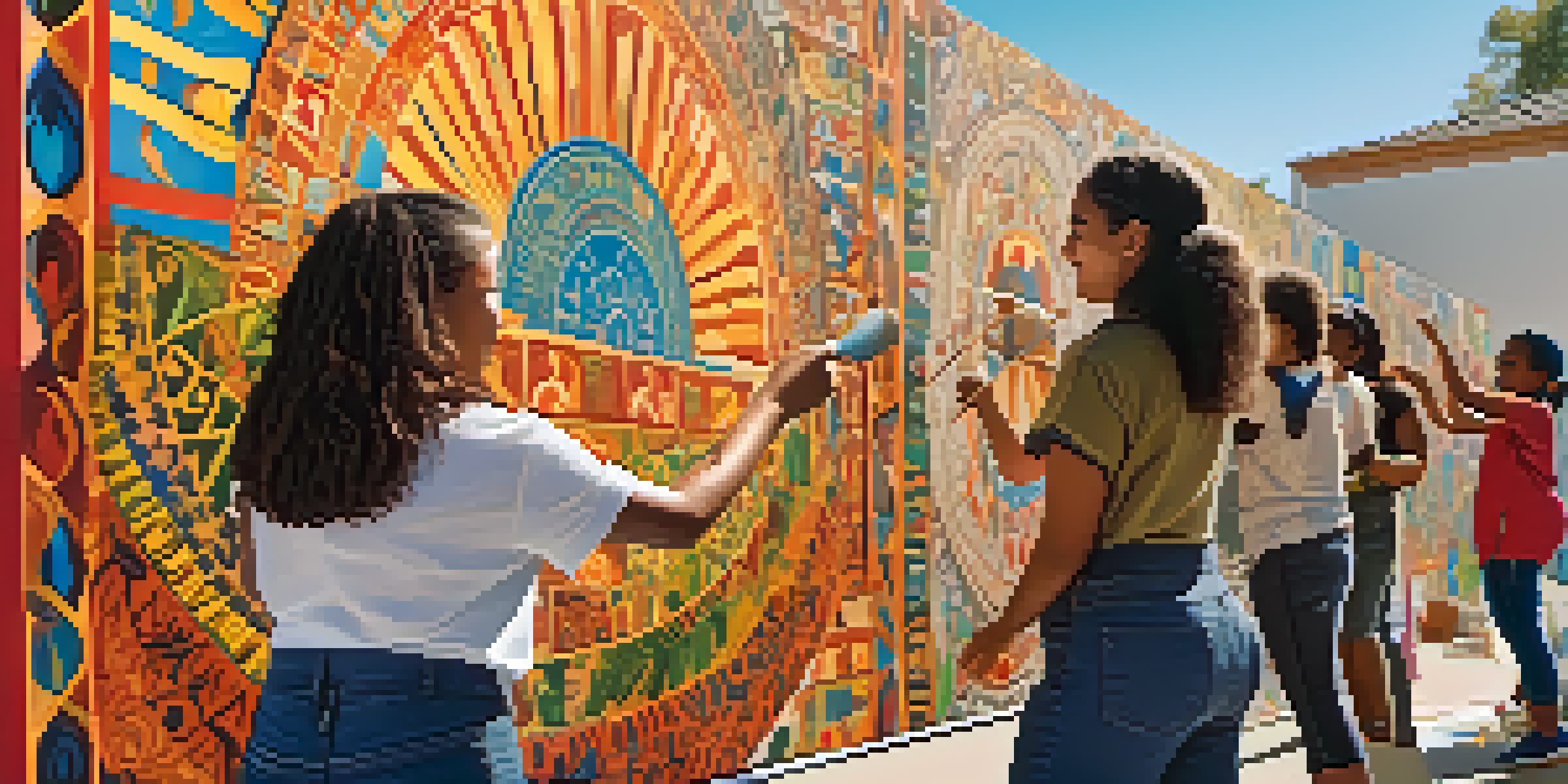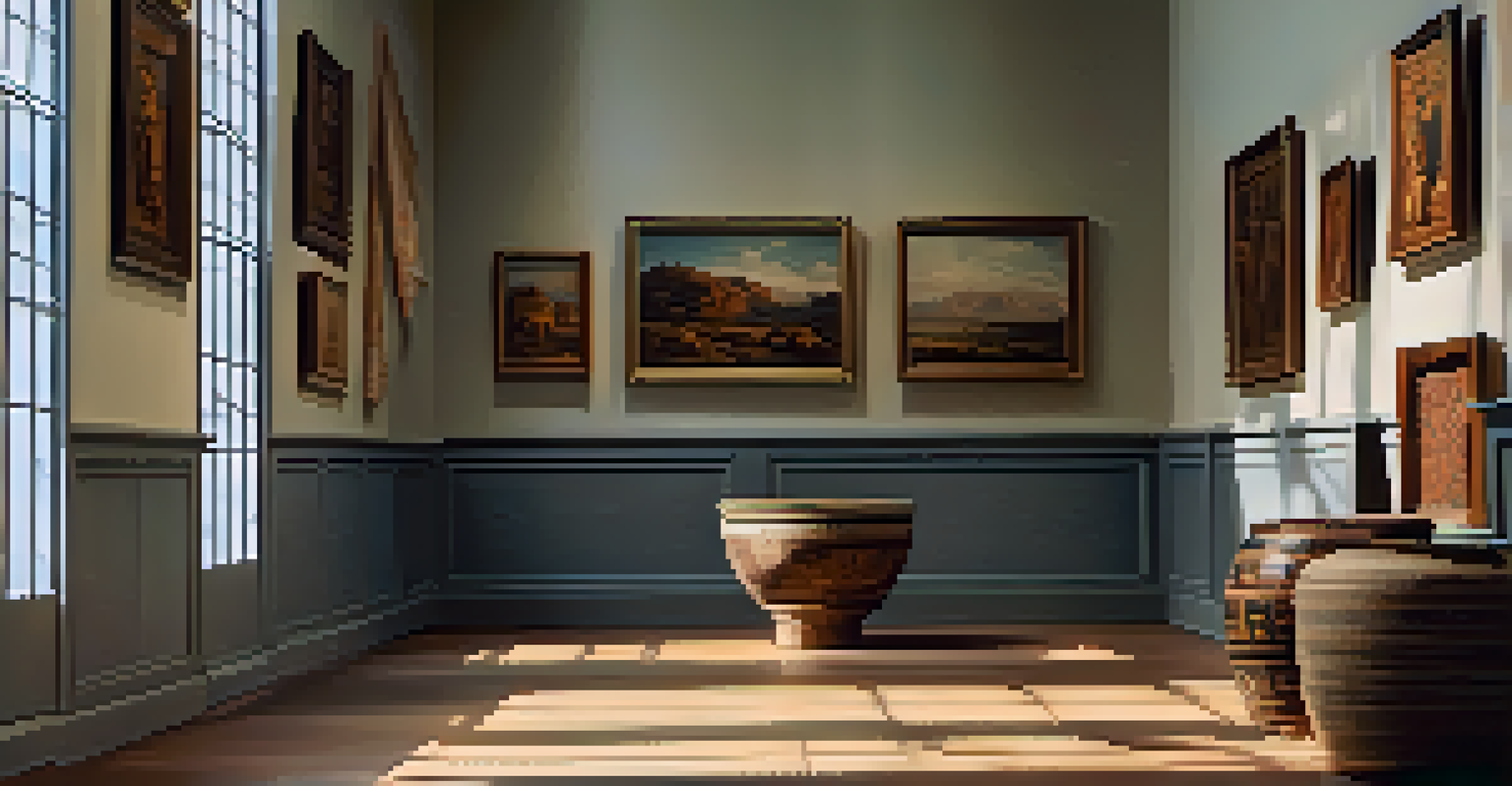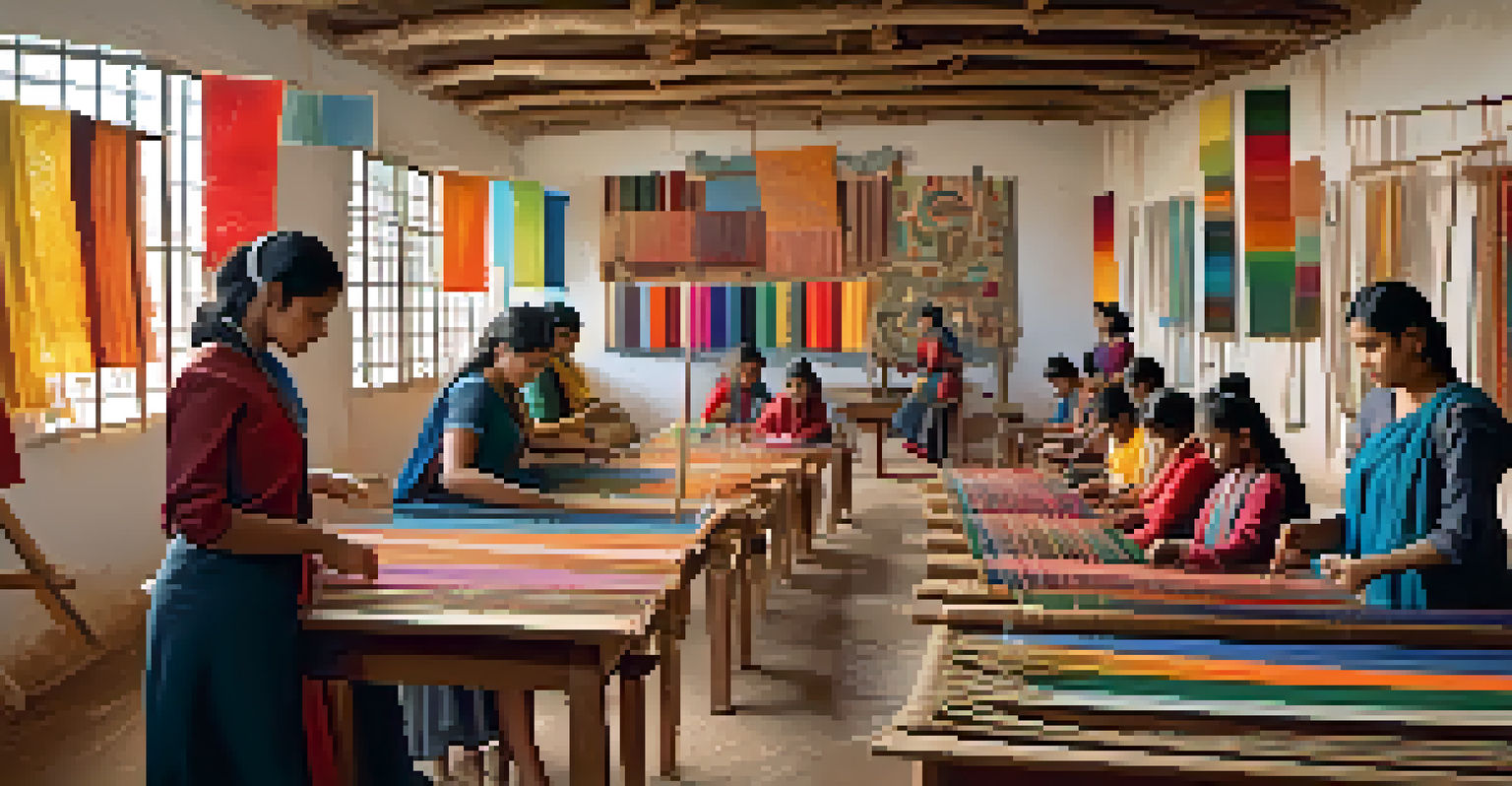The Role of Art Education in Cultural Heritage Preservation

Understanding Cultural Heritage and Its Importance
Cultural heritage encompasses the traditions, languages, and art forms that define a community. It's like a treasure chest filled with stories and values that have been passed down through generations. By preserving cultural heritage, we not only honor our ancestors but also foster a sense of identity and belonging in the present.
Cultural heritage is the bridge that connects the past with the future, providing a sense of identity and continuity.
Imagine walking through a museum filled with artifacts that tell the story of your ancestors; this connection is vital for understanding who we are. Each piece of art or tradition holds significance, providing insights into our shared history. Without preservation, these valuable narratives risk being lost forever.
Art plays a crucial role in this preservation process, acting as a bridge between the past and the future. Through various forms, such as visual arts, music, and dance, culture is expressed and maintained. This is where art education becomes essential, as it equips individuals with the knowledge and skills to keep these traditions alive.
The Intersection of Art Education and Cultural Identity
Art education serves as a powerful tool for exploring and expressing cultural identity. When students learn about their own cultural backgrounds through art, they gain a deeper appreciation of their heritage. This exploration can take many forms, from traditional crafts to modern interpretations of historical themes.

For instance, a student learning traditional weaving techniques not only acquires a skill but also connects with the stories behind those patterns. This process reinforces their cultural identity and instills pride in their heritage. The more they understand their roots, the more they are motivated to preserve them.
Art Education Preserves Heritage
Art education plays a crucial role in preserving cultural heritage by fostering a deeper appreciation and understanding of one's cultural identity.
Moreover, art education encourages dialogue and sharing of diverse cultural perspectives. By engaging with different art forms, students can appreciate the rich tapestry of global cultures. This exchange fosters empathy and understanding, essential components in preserving cultural heritage in an increasingly interconnected world.
Art Education as a Tool for Community Engagement
Community engagement through art education can lead to a collective effort in preserving cultural heritage. Local workshops, festivals, and exhibitions can bring people together, fostering a sense of community pride and collaboration. When community members actively participate in preserving their culture, it strengthens their bonds and shared identity.
Art is not what you see, but what you make others see.
For example, community art projects that celebrate local history can inspire residents to reconnect with their heritage. These projects not only beautify public spaces but also serve as a reminder of the stories and traditions that shape the community. The act of creating together can reignite interest in cultural preservation.
Additionally, involving younger generations in these initiatives ensures that cultural knowledge is passed down. Through hands-on experiences, children learn the importance of their heritage while developing their artistic skills. This interplay between art and community cultivates a legacy of cultural appreciation.
The Role of Technology in Art Education and Heritage
In the digital age, technology plays an increasingly significant role in art education and cultural heritage preservation. Online platforms make it easier for educators and students to access rich resources, from virtual museum tours to interactive art projects. This democratization of knowledge allows a wider audience to engage with cultural heritage.
For instance, augmented reality apps can bring historical artifacts to life, offering immersive learning experiences. Imagine pointing your smartphone at an ancient sculpture and seeing a video that tells its story. Such innovative tools not only capture the interest of tech-savvy students but also make learning about heritage more engaging.
Community Engagement is Key
Engaging communities through art initiatives strengthens bonds and encourages collaborative efforts to preserve local cultural traditions.
However, while technology enhances art education, it’s crucial to balance it with traditional methods. Digital tools should complement, not replace, hands-on experiences with art. By merging the old with the new, educators can create a comprehensive approach to preserving cultural heritage that resonates with today's learners.
Challenges in Art Education for Cultural Preservation
Despite its significance, art education faces several challenges in the context of cultural heritage preservation. Funding cuts and curriculum changes often limit the resources available to educators. This can lead to a diminished focus on the arts, making it harder for students to engage with their cultural heritage.
Moreover, not all communities have equal access to quality art education programs. Marginalized groups may find it particularly challenging to preserve their cultural heritage without adequate support. This inequity can result in the erasure of unique traditions and art forms that deserve recognition.
Addressing these challenges requires a concerted effort from policymakers, educators, and community leaders. By advocating for the arts and ensuring that all students have access to quality art education, we can create a more inclusive environment for cultural preservation.
Success Stories: Art Education and Heritage Preservation
There are numerous inspiring examples of how art education has successfully contributed to cultural heritage preservation. In various communities, students have taken the lead in revitalizing traditional art forms that were at risk of fading away. These initiatives not only revive cultural practices but also empower young people to take pride in their heritage.
One notable success story comes from a school that implemented a program focusing on indigenous art and storytelling. Students worked with local artists to learn traditional techniques, ultimately creating a vibrant mural that represented their community's history. This project not only beautified their school but also instilled a sense of pride and ownership in their cultural heritage.
Technology Enhances Learning
Incorporating technology into art education enriches the learning experience and makes cultural heritage more accessible to a wider audience.
Such initiatives highlight the transformative power of art education. When students are given the tools and support to explore their cultural roots, they become advocates for preservation. Their passion can inspire others in the community to join the effort, creating a ripple effect that benefits future generations.
Future Directions for Art Education in Cultural Heritage
Looking ahead, the future of art education in cultural heritage preservation appears promising. As awareness grows about the importance of culture and arts, more educators are embracing interdisciplinary approaches that integrate art with history, anthropology, and environmental studies. This holistic view enriches the learning experience and emphasizes the interconnectedness of cultural heritage.
Furthermore, fostering partnerships between schools, local artists, and cultural organizations can enhance art education programs. Collaborative efforts can lead to new projects that celebrate and preserve cultural heritage while providing students with practical skills and real-world experiences.

Ultimately, the goal is to create a dynamic and inclusive art education landscape that empowers individuals to become stewards of their cultural heritage. By cultivating creativity and critical thinking, we can ensure that the rich tapestry of human experience continues to inspire and educate future generations.